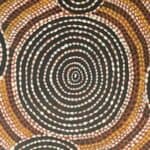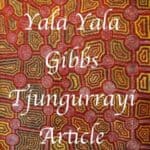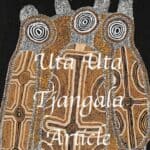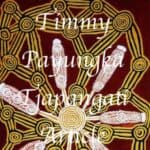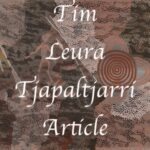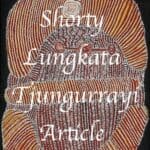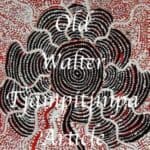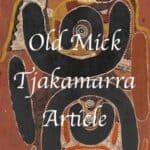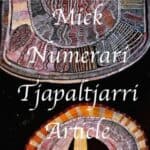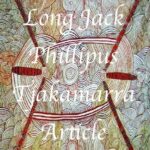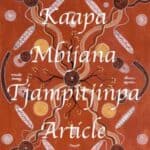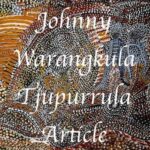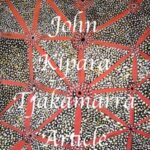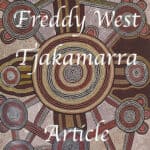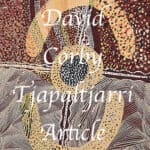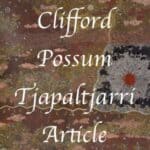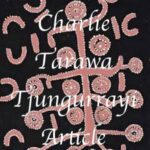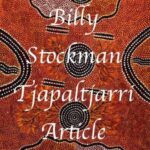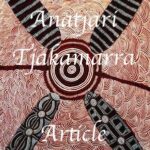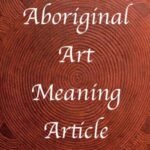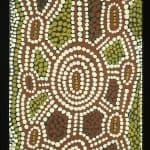Mick Namarari Tjapaltjarri
Mick Namarari Tjapaltjarri was an early Papunya Western desert Artist. Unlike many early artists, he continued painting and innovating for over 30 years. He was at the forefront of the evolution of Aboriginal painting from traditional to abstract.
In the early part of his career, Mick Namarari Tjapaltjarri painted on small bits of board. He went on to become one of the most vital figures of the aboriginal art movement. Many of his early works are ritual and contain secret imagery meant only for the eyes of initiated men. His later works are on Canvass and are masterpieces of ephemeral minimalism.
The aim of this article is to assist readers in identifying if their Aboriginal painting is by Mick Namarari Tjapaltjarri. It compares examples of his work. It also gives some background to the life of this fascinating artist.
If you have a Mick Namarari Tjapaltjarri Aboriginal painting to sell please contact me. If you want to know what your Mick Namarari Tjapaltjarri painting is worth please feel free to send me a Jpeg. I would love to see it.
If you wish to research past sales of this artist please read: Mick Namarari Tjapaltjarri Artworks and Values.
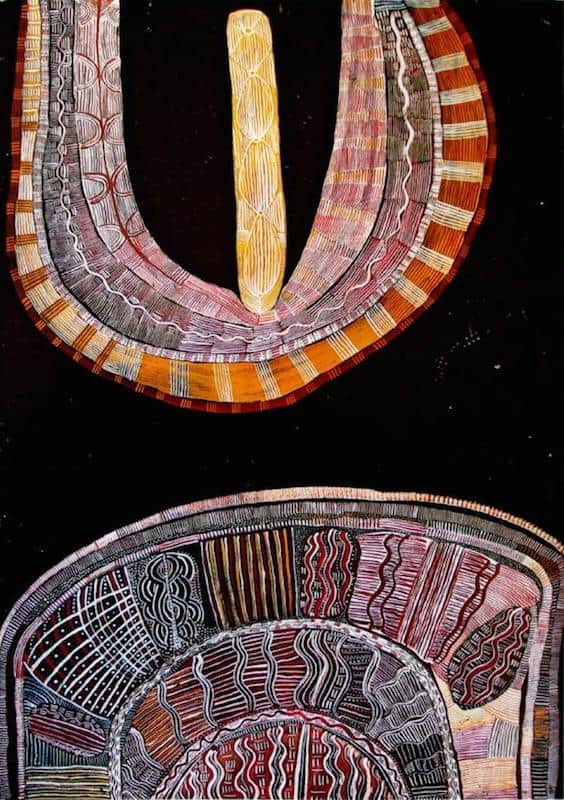
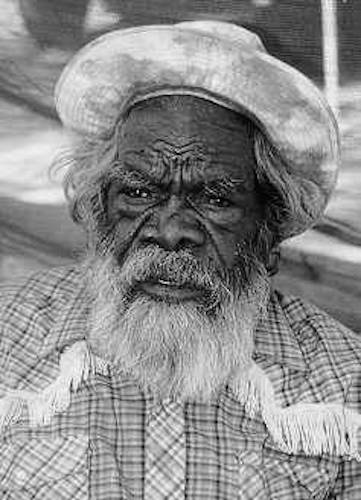
Mick Namarari Tjapaltjarri Early Life
Mick Namarari Tjapaltjarriwas born around 1926 at Marnpi in the Northern Territory. As a child, Namarari traveled with his parents to many of the key dreaming sites through Pintupi country.
While still a child a traditional tribal raiding party speared and killed his father. His mother Maiyenu was so grief-stricken that she threw herself into a fire and was horribly burnt. Other family members looked after Mick and moved to Putati Spring south-west of Mount Leibig.
Mick Namarari Tjapaltjarri later attended school in the mission at Hermannsburg. As soon as he was old enough he went to work as a stockman at Tempe Downs and at Haasts Bluff. At Haasts bluff he married to his first wife.
While living at Haast bluff older Pintupi men taught him the songs and ceremonies associated with his country. He was a good hunter and would often kill game for food with a spear and Woomera.
Mick had strong knowledge of many ancestral sites and traditional ceremonies. He moved to Papunya in the 1960’s and served on the community council with Johnny Warrankula and Long Jack Phililipus.
Early painter
In 1971 Geoff Bardon became a local school teacher at Papunya primary. He tried to encourage local children to paint in their own traditional style. When he found out only older men could paint these stories he to started a men’s painting group.
Mick Namarari Tjapaltjarri had an intense desire to paint. Some of his earliest works are on scraps of board using any material he could find. His early paintings were closely tied to traditional designs and symbology. He often painted on a rich and earthy background. His linework was sharp and his spacing showed great clarity. Mick was also an inventive and experimental artist. He would often introduce design elements not dictated by custom. Mick understood that he was an artist and not a cartographer of ancestral designs. He often painted the same songline or dreaming in a variety of ways. Each time he would focus and experiment on a different aspect of the same story.
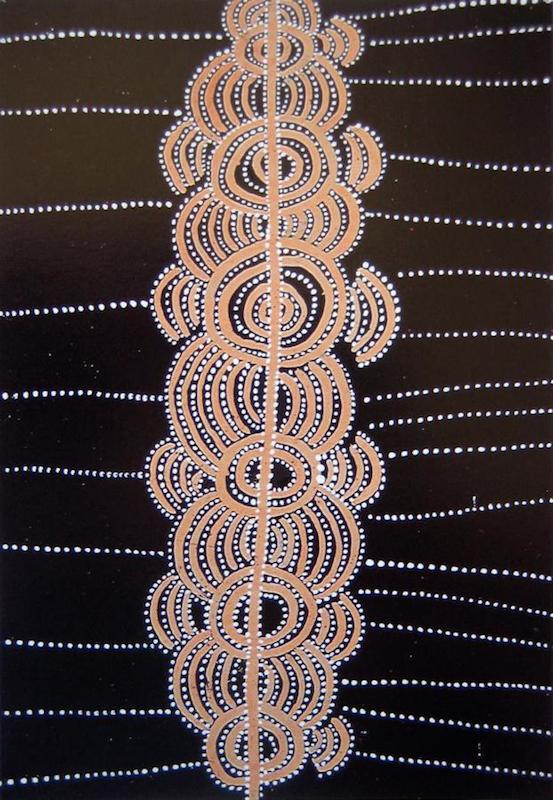
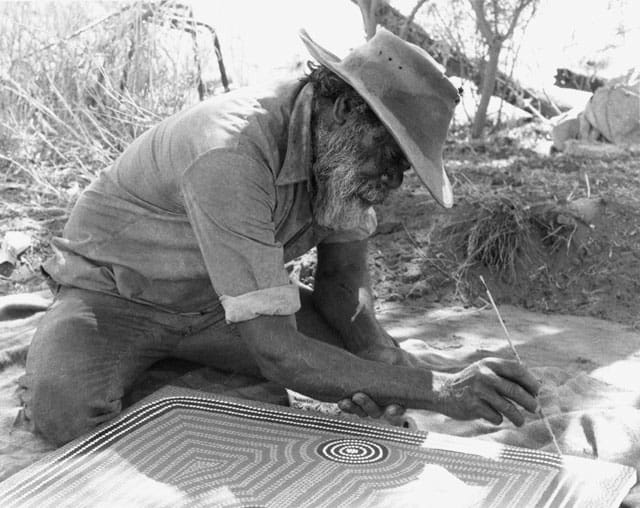
His inventive array of techniques inspired other painters in the men’s painting room. He was continuously at the cutting edge of a slowly evolving style.
Mick was also one of the founding shareholders of Papunya Tula. Papunya Tula was an Art company for promoting aboriginal art owned by aboriginals.
Other skin brothers in the men’s painting group included Tim Leura, Clifford Possum, and David Corby
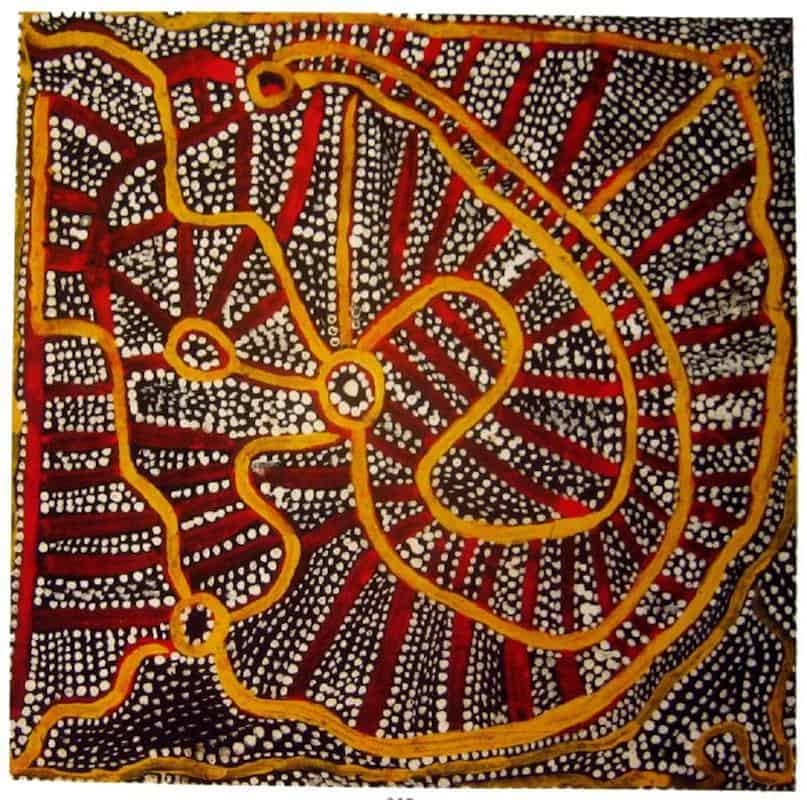
Mick Namarari Tjapaltjarri Middle Period
In 1974 paintings sold in Alice springs caused some conflict between Aboriginal groups. Some aboriginal groups felt that to much secret and sacred imagery was being portrayed in Papunya Paintings.
This lead to the Papunya painters group to having to disguise and veil sacred imagery behind dots. This suited Mick Namarari Tjapaltjarri style of painting. He had already been playing with design elements for years. While other painters like Kaapa and Anitjari artwork suffered from these changes Micks’s work excelled.
Mick Namarari Tjapaltjarri was at the cutting edge of aboriginal artistic experimentation. He was integral in leading the group away from what some have referred to as Tingari cartography towards the ethereal minimalism of the 1990’s
Middle period Paintings continued
In 1978 he played the leading role in Bardon’s film Mick and The Moon. The film was about an aboriginal who believed he owned the moon but had to paint ceremonial depictions of it to retain ownership. His moon paintings of this period reveal a cosmology where the human world and the natural landscape are continuous.
He was one of the few artists to stay on in Papunya after the Pintupi exodus of the early 1980’s. He then moved to Nyunmanu near Marnpi with his second wife and their three children.
Nyunmanu was too isolated to earn money from art and he needed to support his young family. This forced him to move to Kintore where he could travel more easily to Alice Springs. By the late 1980’s his paintings were increasingly sought after by galleries.
In 1989 he attended the opening of the exhibition Mythscapes at the National Gallery of Victoria
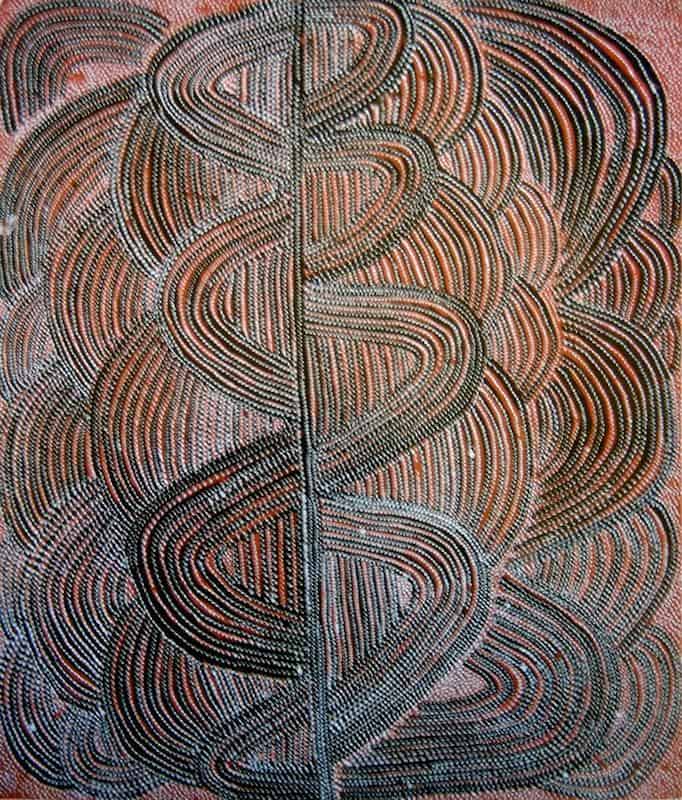
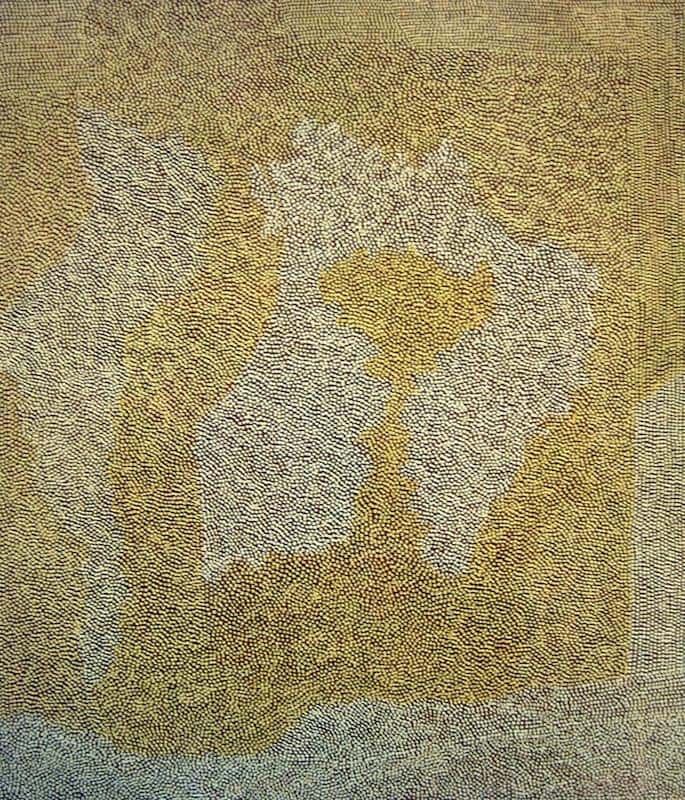
Mick Namarari Tjapaltjarri Late period
The early to mid-1990’s saw Mick produce some of his most sort after works. These later works are all on canvass and both intense and minimalist at the same time.
His most popular series is the Mouse dreaming. In these, he uses hypnotic minimalist fields of dots. These dots of subtly changing hues suggest the microscopic life of the desert. These later minimalist canvasses are far removed from his early paintings in Papunya.
1991 he won the 8th National Aboriginal Art Award. It was an important milestone both personally and for the Papunya Tula Artists Company. His stature grew following solo exhibitions at Gallery Gabrielle Pizzi in 1991 and 1992 and with Utopia Art Sydney in 1993 and 1994.
In the mid to late 1990’s Mick painted several works for independent dealer Steve Nibbs. Most of these works found their way into important galleries and collections. In 1994 Mick Namarari was the first recipient of Australia Council’s Red Ochre Award.
During his later years, Namarari helped transmit knowledge and inspiration to a new generation of rising artists. His knowledge and techniques played a crucial role that still reverberates today.
Mick died in 1998 after painting for over 30 years. He had a profound effect on the evolution of Western Desert art.
Mick Namarari Tjapaltjarri could also be spelled Mick Namarari Djapaltjarri or Mick Namarari Japaltjarri. He is also known as
Mick Numieri Tjapaltjarri, Mick Namari Tjapaltjarri, Mick Numerari Tjapaltjarri and Mick Ngamarari Tjapaltjarri.
Mick Namarari Tjapaltjarri references
Meaning of Mick Namarari Tjapaltjarri paintings

Wind Story
The painting depicts the wind story. The spirit of the wind lives in a cave at Mount Liebig. It shows the wind coming out of the cave and blowing strongly to the north-west.
When his birthplace, Marnpi, Namarari often mentioned a spiralling desert wind. Though this is one of many narratives attached to this site, it is one that he returned to throughout his practice as an artist. In this early example, Namarari has adopted a simple yet hypnotic composition to draw the eye into the vortex of an ancestral wind. The force and spread of the wind, shown here by the banded arms that reach out across the landscape. The wind shapes and creates natural features of rocky outcrops and prominent sandhills.
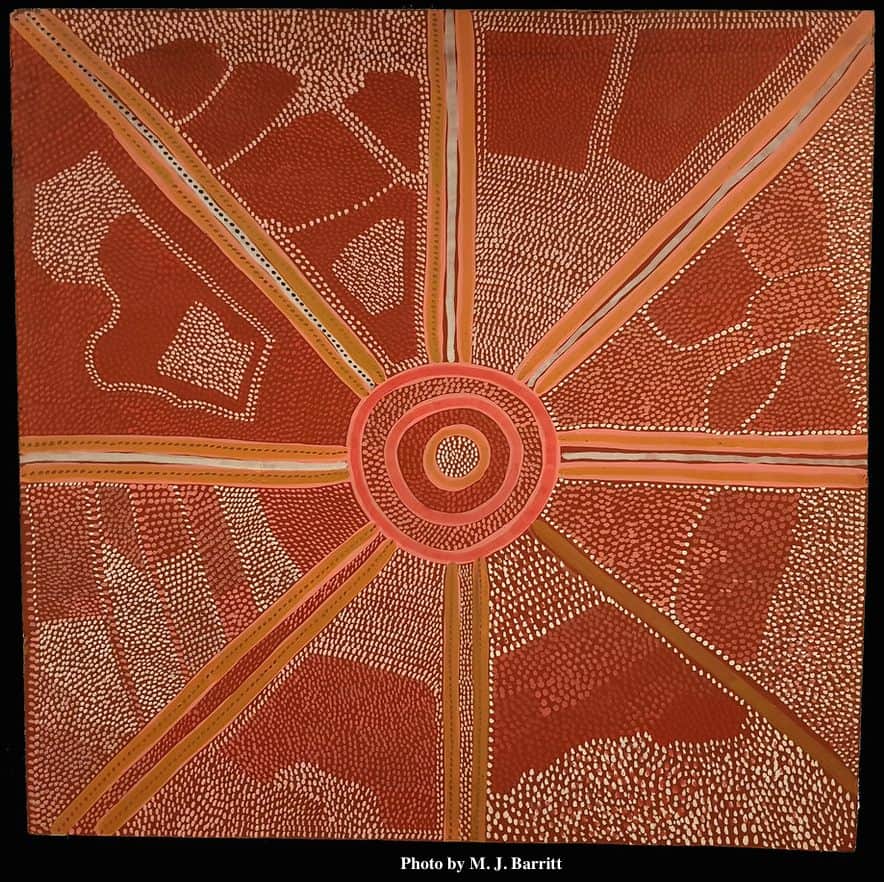
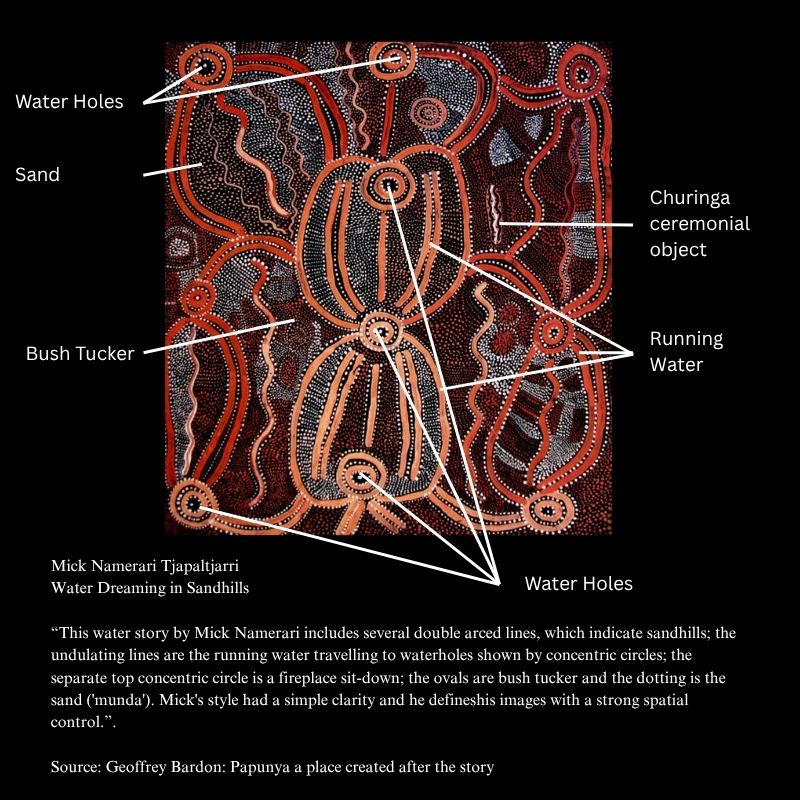
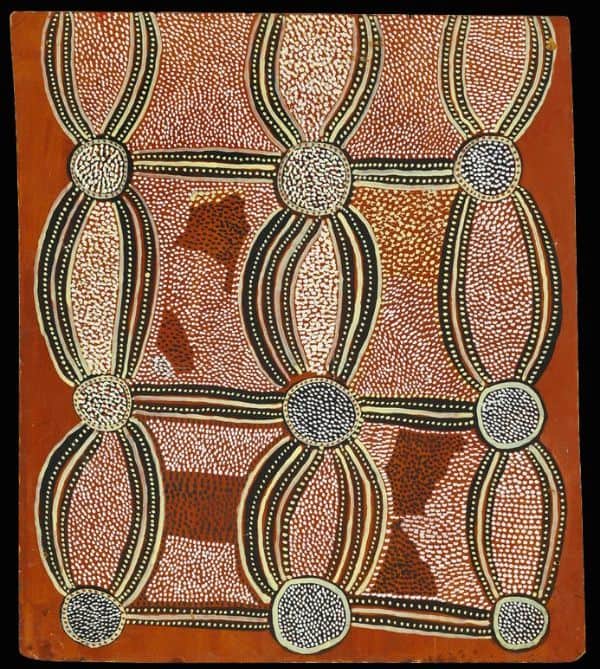
Painted in 1972 with synthetic polymer paint on composition board 54.0 x 46.5 cm
Sandhill Dreaming
The circular forms, with internal dotting pattern, here represent stylised trees or bushes. They probably represent the desert oak tree, unique to the Western Desert. This is part of a map landscape of Pintupi homelands of the Gibson Desert, Western Australia.
The arced network of vertical lines, linking circles (desert oak) top to bottom are sandhills. Sandhills and desert oak are typical of a landscape terrain west of Papunya, Kintore and further west. The horizontal straight lines are a stylised pattern for the journey-travelling motif. They imply people foraging and hunting, crossing a landscape region in the artist’s homeland. The pattern of circles, arcs and straight lines is a mind-map of the artist’s place or homeland. This homeland known to him in intimate detail is generalized without any sacred/secret signs or symbols. The dotting represents the grass, earth and bush tucker in sandhills. The painting also simultaneously represents the prepared ground for a ceremony of this dreaming story.
Description based on letter from Geoffrey Bardon
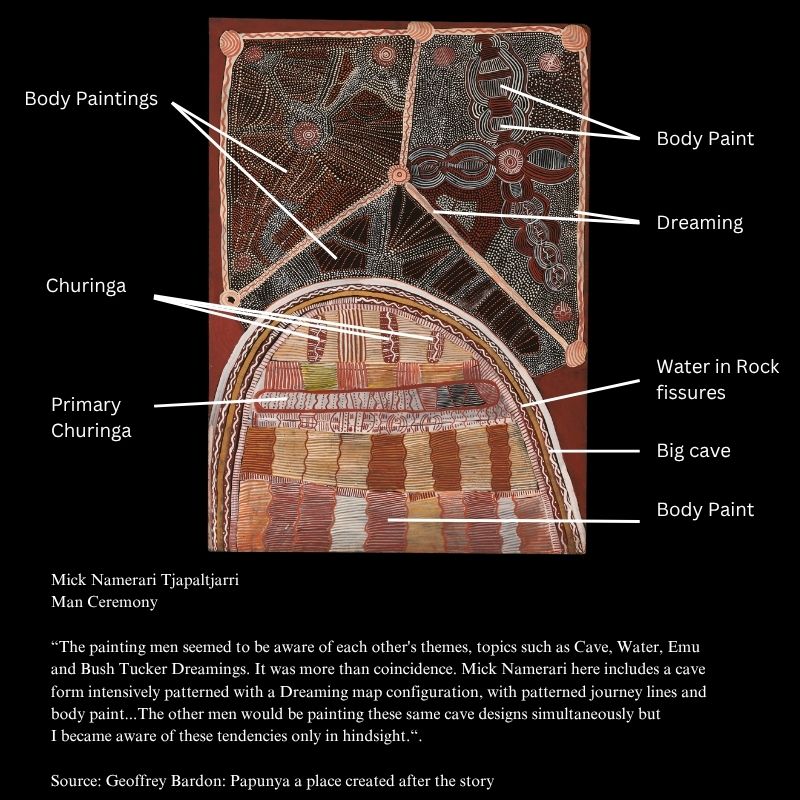
Echidna Moon Dreaming
Echidna Moon Dreaming depicts the tracks of ancestral echidna or Echidna spirits. These beings travelling from all points of the compass to meet at a waterhole at ‘Mintjirrybiy’. At Mintjirrybiy the echidne spirits perform ceremonies in the light of the full moon. The waterhole depicted is east of Namarari’s birthplace of Marnpi. In the painting, the outer orange circle of the central roundel represents the moon. The innermost concentric circles figure the waterhole which is further surrounded by an orange oval of sand. Beyond this the five sections of parallel lines represent mulga trees at the site, and the dotting bush foods that attract echidna.
Based on description by Wally Caruana
Painted 1977 with synthetic polymer paint and synthetic binder on composition board
62 x 46cm
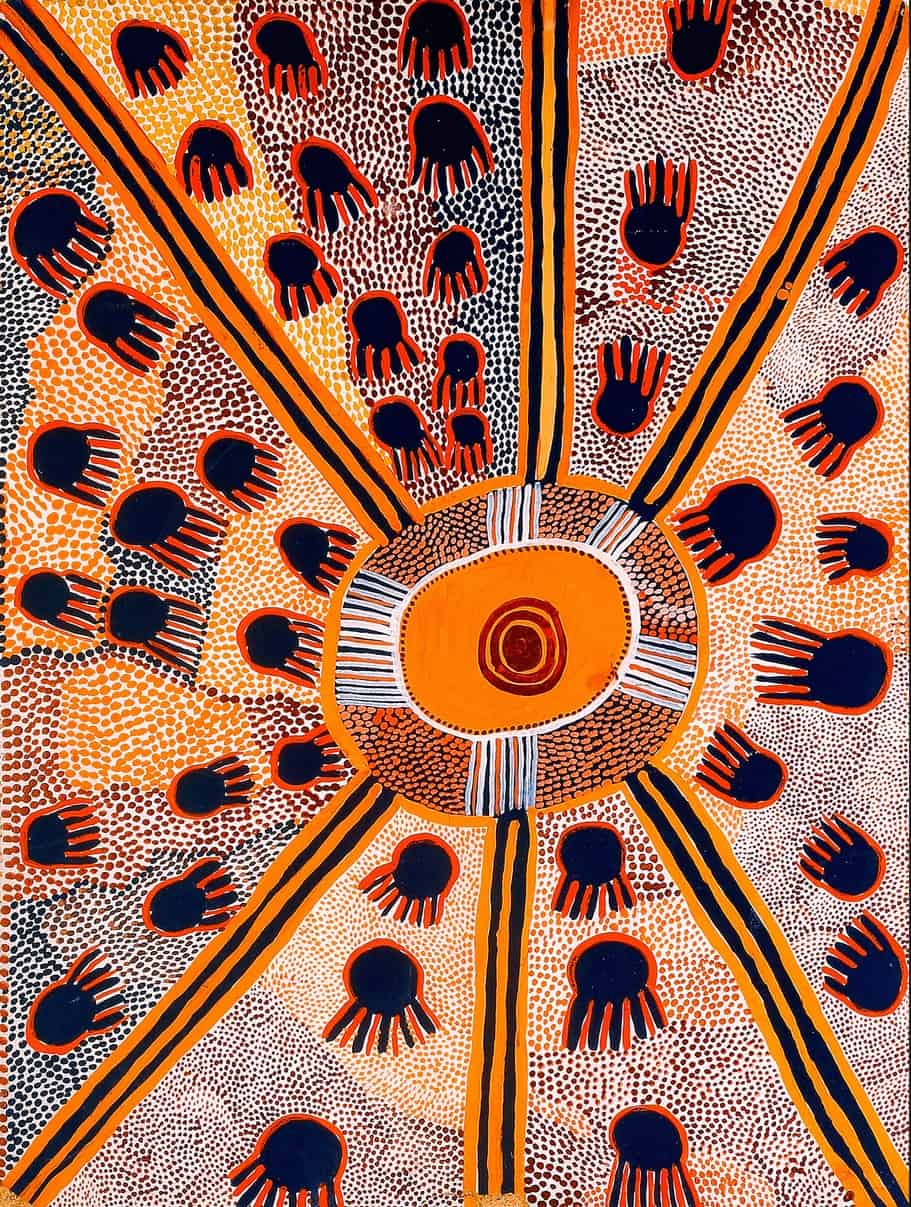
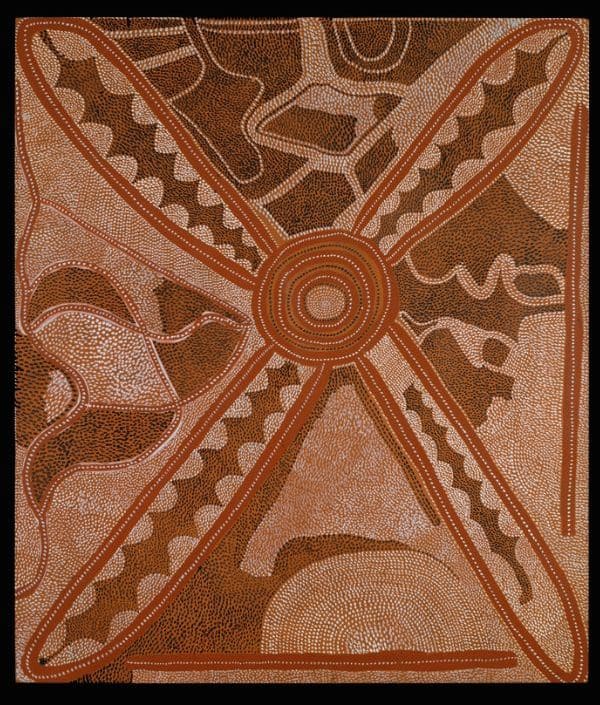
Yam Story
On two sides straight lines represent digging sticks. Digging sticks were essential for extracting life-saving yams from the harsh desert soil. The long oval shapes represent the yams radiating from a source of water or camp.
Yam story painted in the first years of the Papunya movement, during a time of great artistic exploration and innovation. The subject of bush tucker was one that Namarari painted regularly.
Mick understood early on that it was not the knowledge of ceremony that made Europeans buy paintings. It was the sometimes just the innovative abstract designs. This is a great example of the movement away from secret and sacred to more secular imagery.
Painted in 1972 with synthetic polymer powder paint on composition board
85.0 x 80.0cm
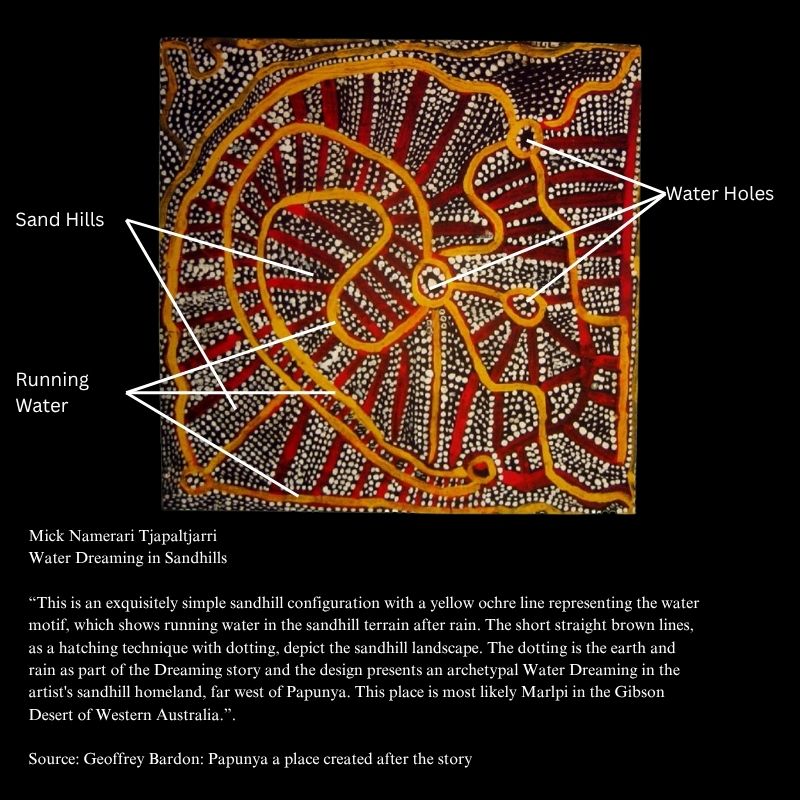
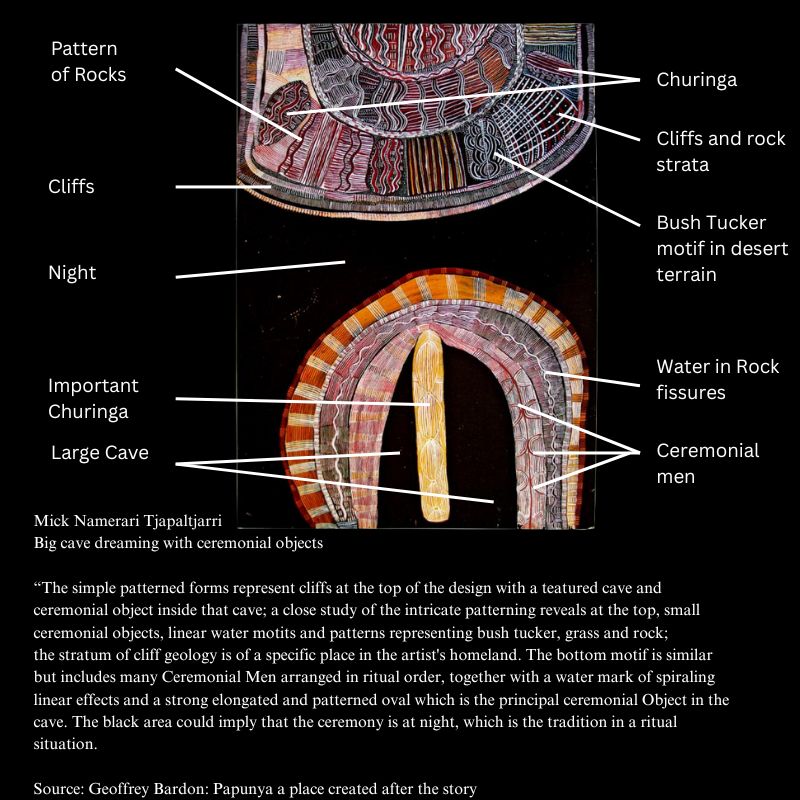
Early Papunya Artworks and Articles
All images in this article are for educational purposes only.
This site may contain copyrighted material the use of which was not specified by the copyright owner.
Mick Namarari Tjapaltjarri images
The following images are not the complete known work by this artist but give a good idea of his style and range.

